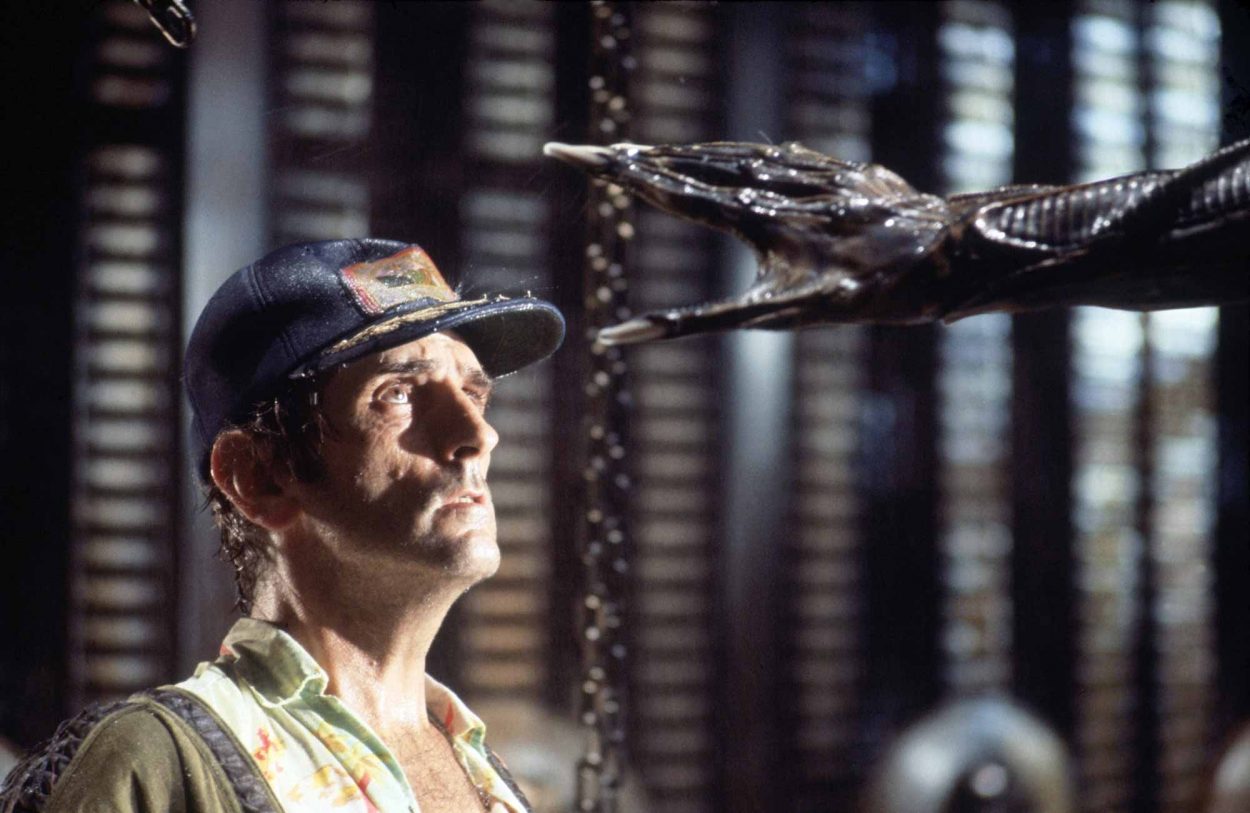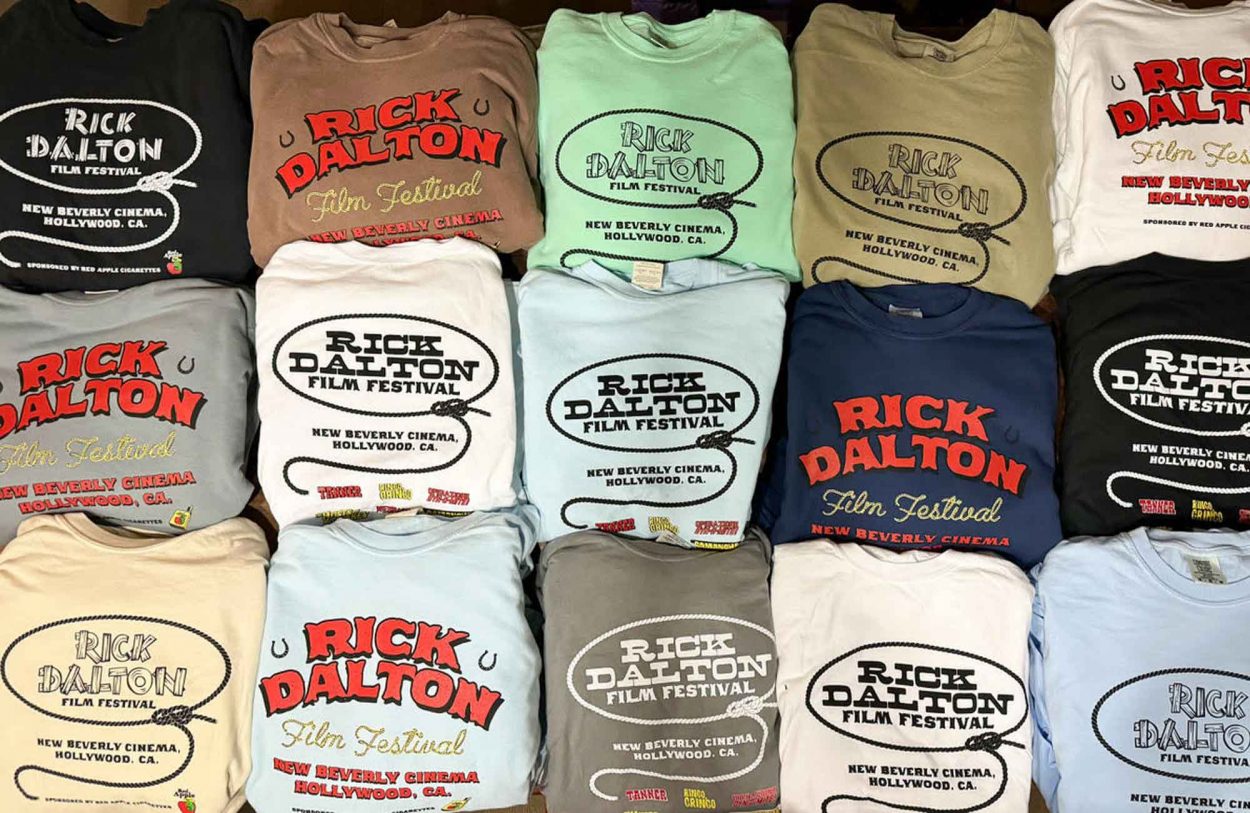“Its structural perfection is matched only by its hostility.” – Ash
Ridley Scott puts an exclamation mark on 1970’s cinema, while casting a tall shadow over the science fiction genre that remains today, with his 1979 masterpiece Alien. The “Jaws in Space” comparison is as common as it is valid, since Alien screenwriters Dan O’Bannon & Ronald Shusett pitched the movie as such, however, Scott himself has described the film as: “The Texas Chainsaw Massacre of science fiction.” A slasher film in space conjures up images of a B-movie that would show in discount theaters, or play in the background of steamed up car windows as the second feature at the drive-in, not a film that appears on AFI’s Science Fiction Top 10 List. Ridley Scott and his team take this interesting, yet simple premise, and elevate it to high art, while raising the bar of science fiction films to heights that have arguably yet to be exceeded – despite the evolving special effects toolbox that seems tailor made for the sci-fi genre.
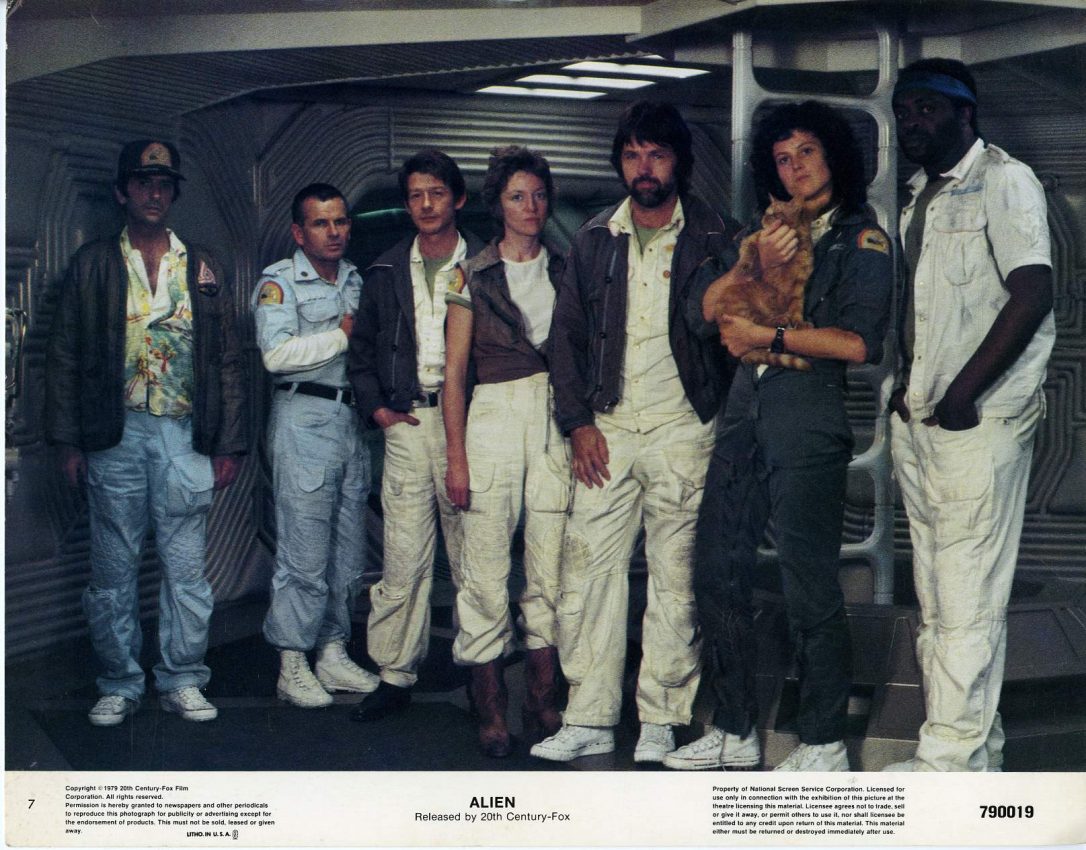
The commercial towing vehicle the Nostromo (named after Joseph Conrad’s 1904 novel) – with its seven passenger crew (exceptionally played by: Tom Skerritt, Sigourney Weaver, Veronica Cartwright, Harry Dean Stanton, John Hurt, Ian Holm and Yaphet Kotto) is a working class space ship without the clean lines of The Discovery One from 2001: A Space Odyssey, the camaraderie of the finely groomed crew of the Star Ship Enterprise, or the high performance hyperdrive of the Millennium Falcon in Star Wars. No, the Nostromo has the lived in look of a flying oil rigger, with a unisex blue collar crew that appear more like roadies for Led Zeppelin than the skilled space jockeys they actually are.
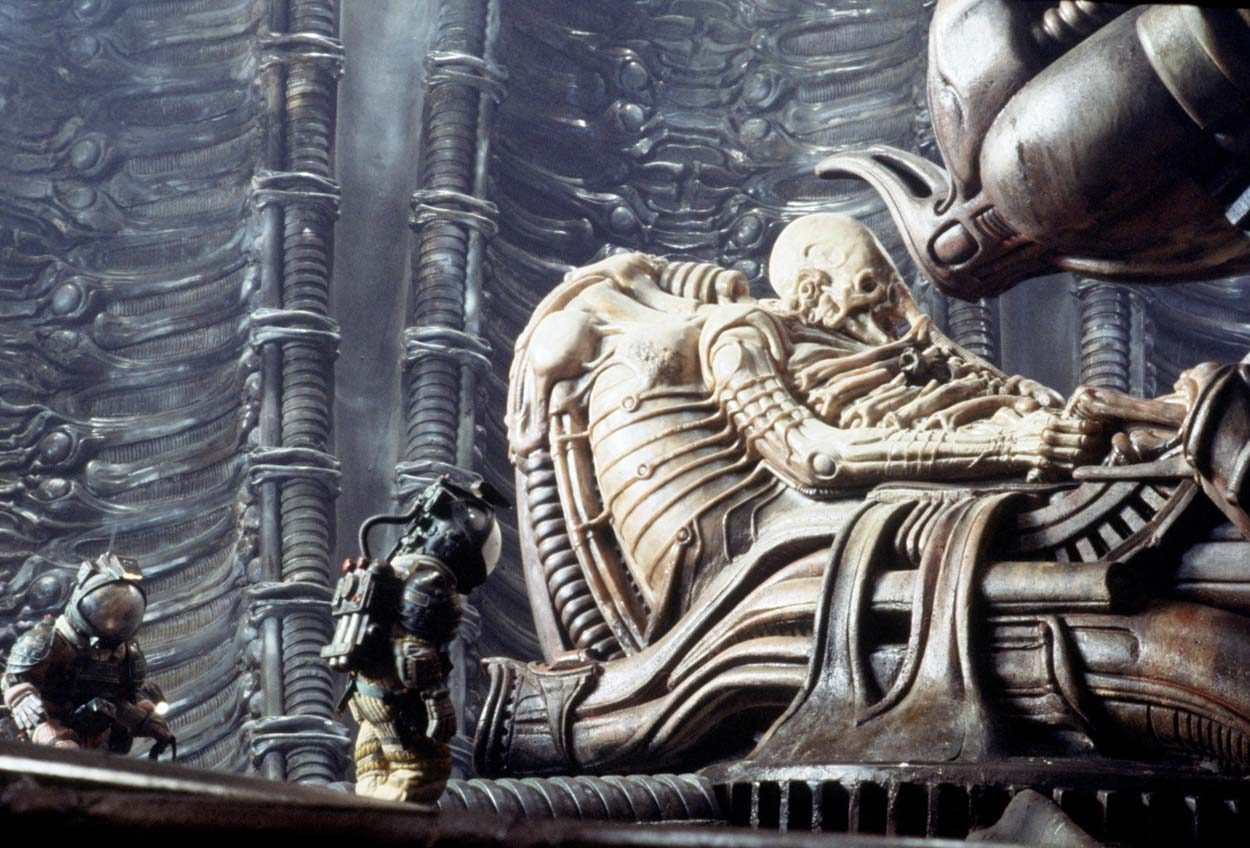
Carrying 20,000,000 tons of mineral ore on their return flight to earth, the crew is awakened prematurely from their Cryosleep Pods by the onboard computer MU-TH-UR, to investigate an acoustical beacon signal of unknown origin on a nearby planetoid. While exploring the planet, an arthropodic like creature sprays acid through a crewmember’s helmet, attaches itself to his face, and gestates inside its human host until it eventually metamorphosizes into a metallic looking predator, that turns the crew’s ship into an inescapable maze of terror.
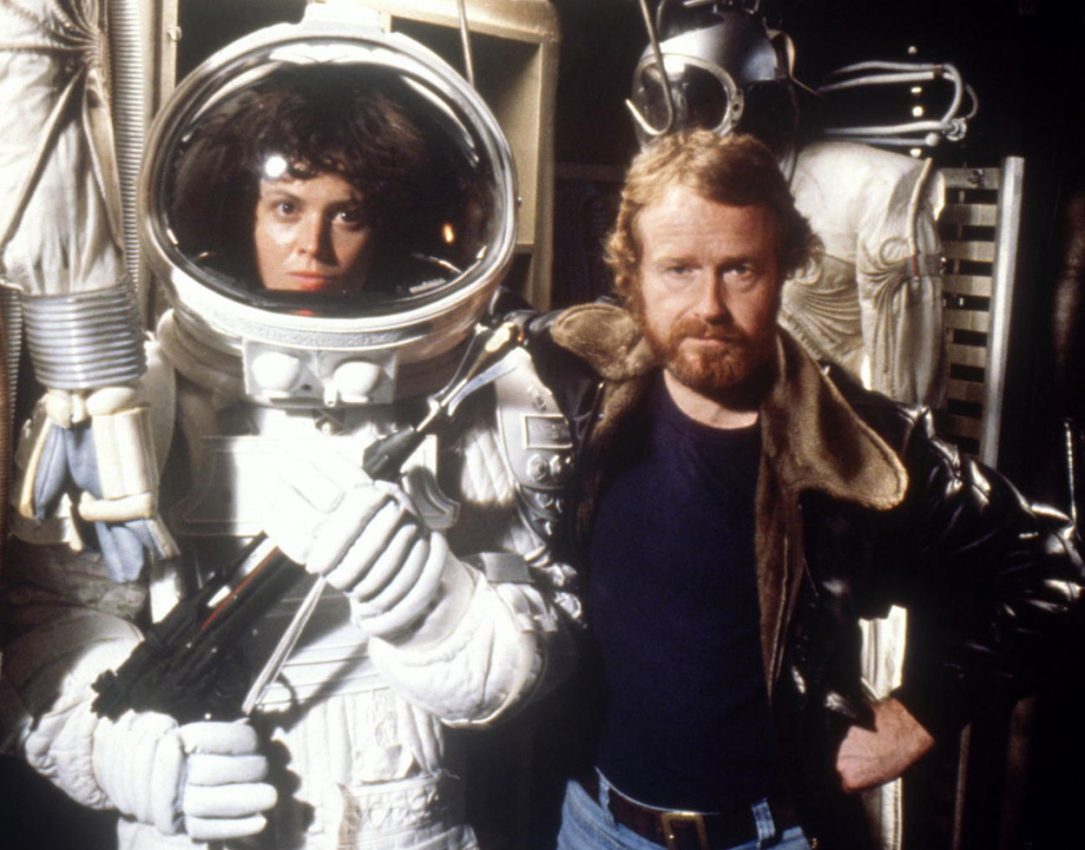 Sigourney Weaver and Ridley Scott
Sigourney Weaver and Ridley ScottApproaching 40 years after its release, the DNA markers of Alien show a confluence of fate, talent, luck, timing, passion, and genius that forged this film at Shepperton Studios in London, and wrestled to the big screen by an emerging filmmaker – Ridley Scott. The opening credits denote “A Ridley Scott Film” and while Alien doesn’t work without Scott’s attention to production detail, aesthetic, mood, performances, visual virtuosity and his ability to convey that vision to his team, the film has pivotal contributions that help set the film apart, and keep it on the Science Fiction Mount Rushmore.
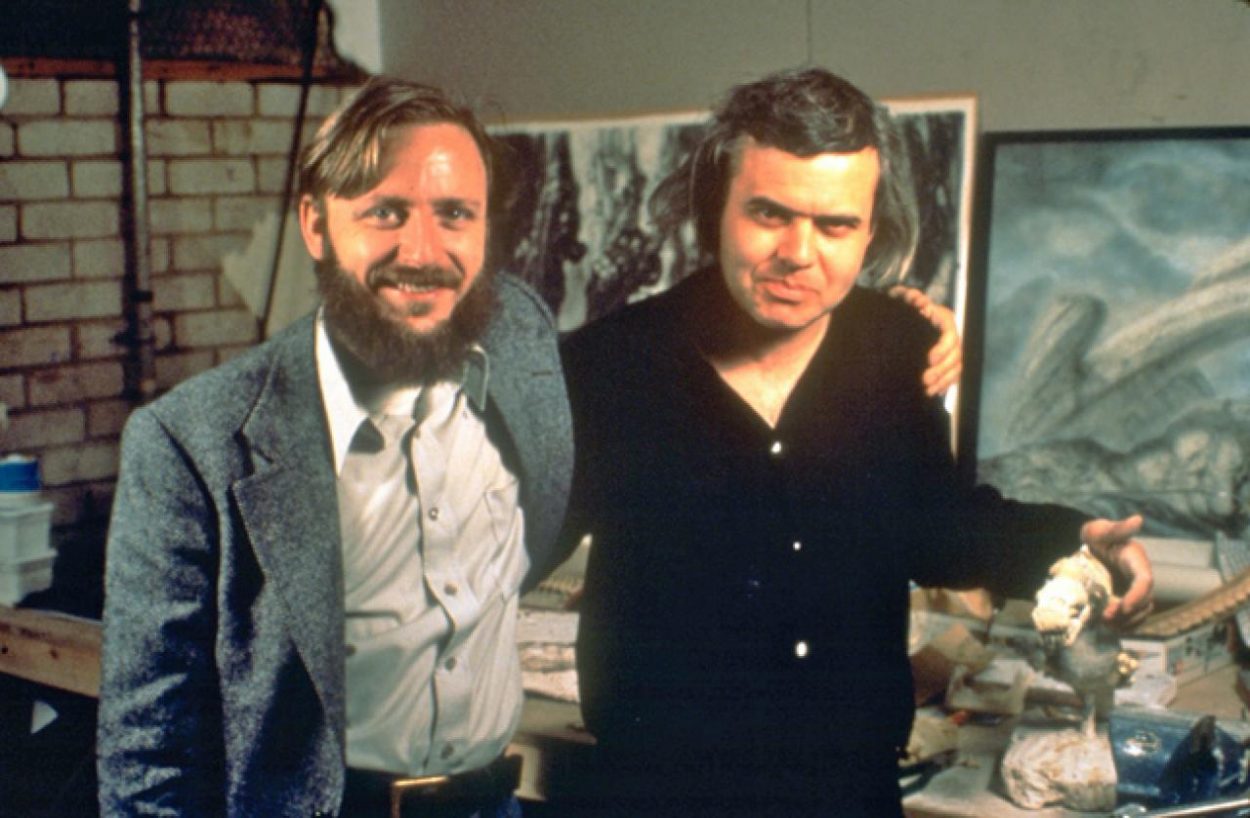 Dan O’Bannon and H.R. Giger
Dan O’Bannon and H.R. GigerFate: Dan O’Bannon turns down a job offer to work on the special effects for a film called Star Wars (he would eventually help with the computer effects at a later date), in order to supervise the special effects on Dune in Europe (a film that fell apart after six months in production). While in France, he meets Swiss artist H.R. Giger, and the two men bond over their love of horror fiction writer HP Lovecraft. Giger gives O’Bannon a book of his artwork, and O’Bannon uses those images to inform his writing on Alien. Images O’Bannon found “terrifying” with creatures that had skeletal systems fused with metallic parts and original looking symmetry.
Talent: O’Bannon and Shusett craft a genre mashing script with a “Giger Monster” that starts garnering immediate attention.
Luck: A handshake deal from Roger Corman’s company with a suggested budget of $750,000 (and paper work to follow in a few days), was circumvented when a chance meeting with an ambitious college friend who asked to read the script – loved it – and offered to take it to Fox, where it was purchased by Brandywine. This elevated the property from B-movie territory, to studio dark horse.
Timing: With the success of Star Wars, combined with the sketches Ridley Scott had presented to the studio, Fox was excited enough about the project to double the $4.2 million budget to $8.4 million. This further expanded the production value that Ridley Scott was pushing for to match the visual landscape he wanted to bring to the film.
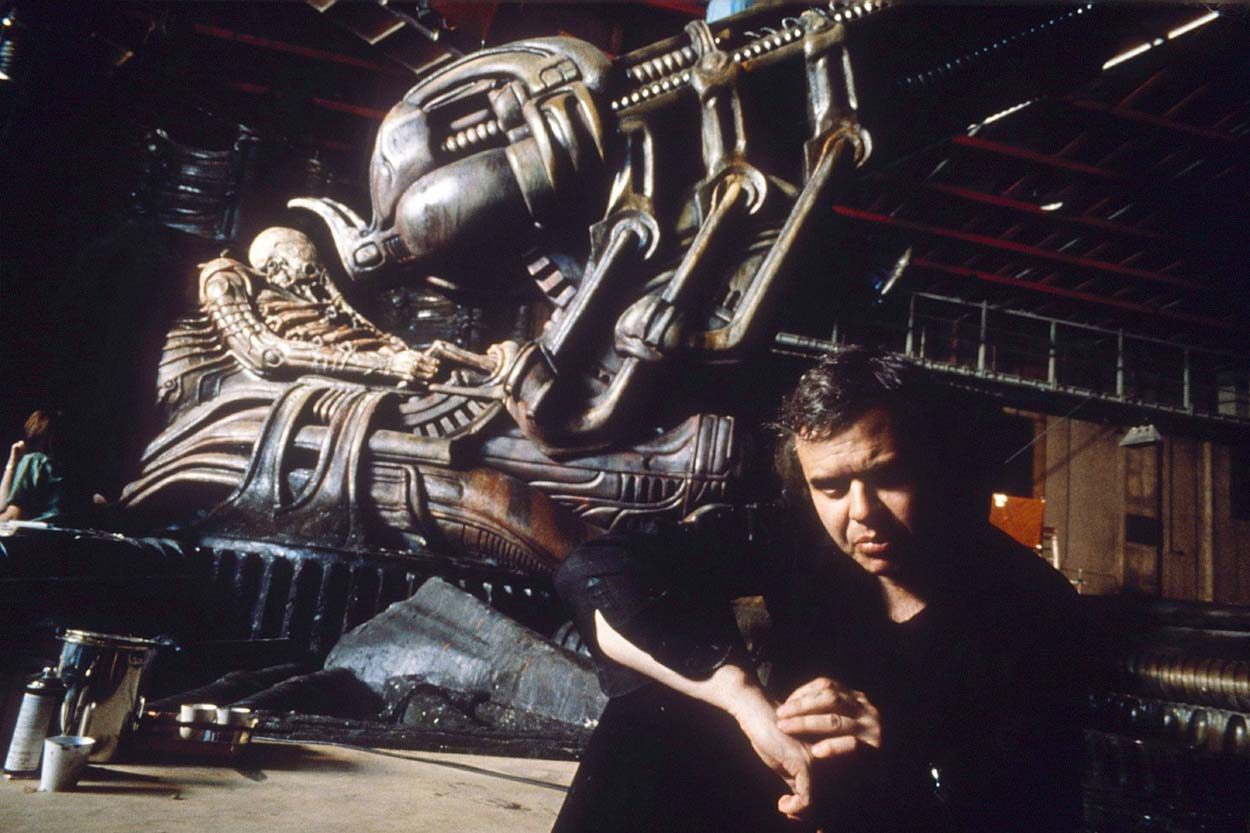 H.R. Giger on the set of Alien
H.R. Giger on the set of AlienPassion: Dan O’Bannon suggests production designers Ron Cobb, Chris Foss and H.R. Giger be hired to design the film. The studio brings in Cobb and Foss, but balks at the idea of bringing in an eccentric Swiss artist in Giger. After O’Bannon shows Ridley Scott some of Giger’s artwork, and explains the artist’s influence on the script, Scott threatens to leave the project if Giger isn’t hired. Fox acquiesces, and the stars for Alien’s legacy are finally aligned.
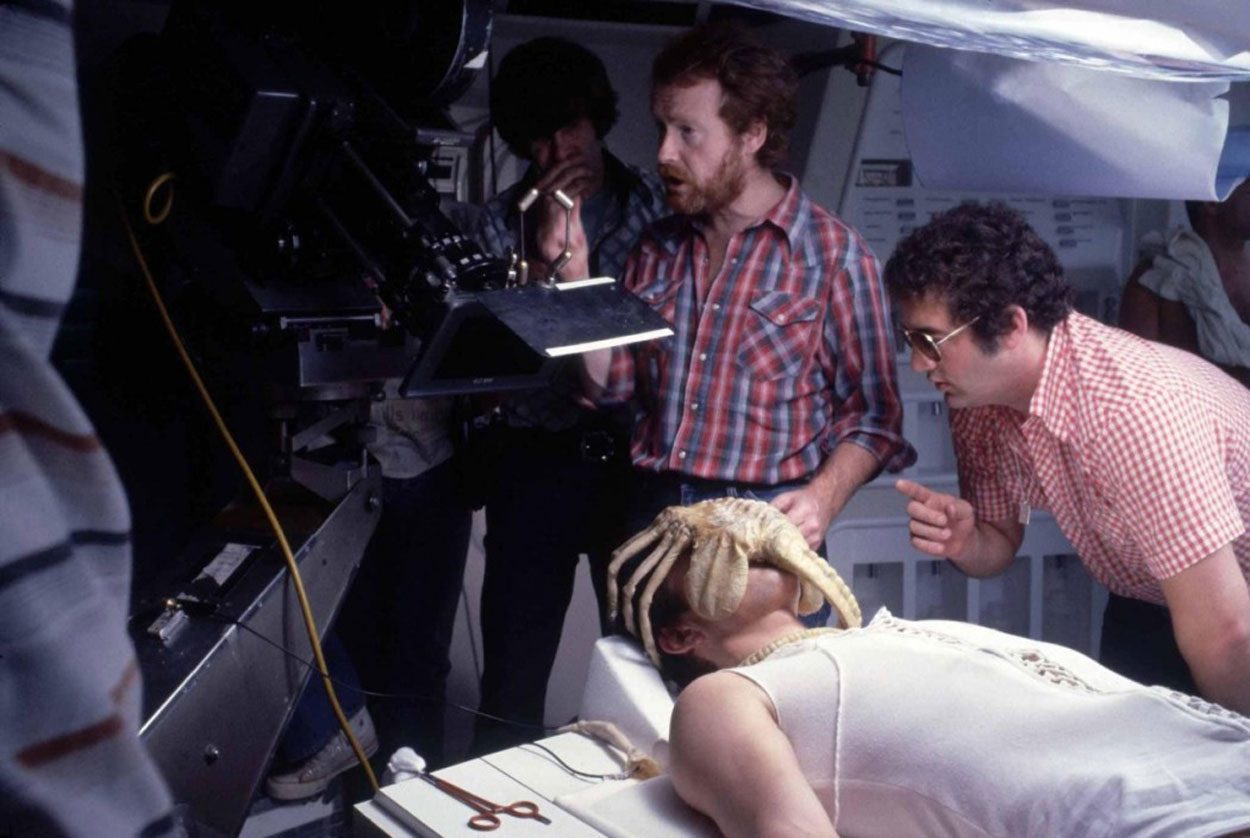
Genius: The score by Jerry Goldsmith (although striped down in the editing room by Scott) is visceral, dark, moody and powerful. The sound design – water dripping, dangling chains rattling like nightmarish wind chimes, voices distorted while transmitted over headsets, as well as the key moments where the absence of sound makes you hold your breath. The female heroine in Sigourney Weaver’s brilliant portrayal of Ripley – an against type female character who isn’t there to run from the monster with her top off. She’s smart, resourceful, and one of cinemas all time great heroes. The pacing. The camera movements. The eggs. The Chestburster. The Facehugger. The mist. The in-camera effects that play out like seamless magic tricks. The Michael Meyers like Alien predator that hides in the shadows, and blends into the architecture of the Nostromo, laying in wait. The decapitated android. Jones the cat. All skillfully pieced together in Ridley Scott’s space noir, sci-fi benchmark, that heightens all your fears, and puts you in the space ship when projected on the big screen.
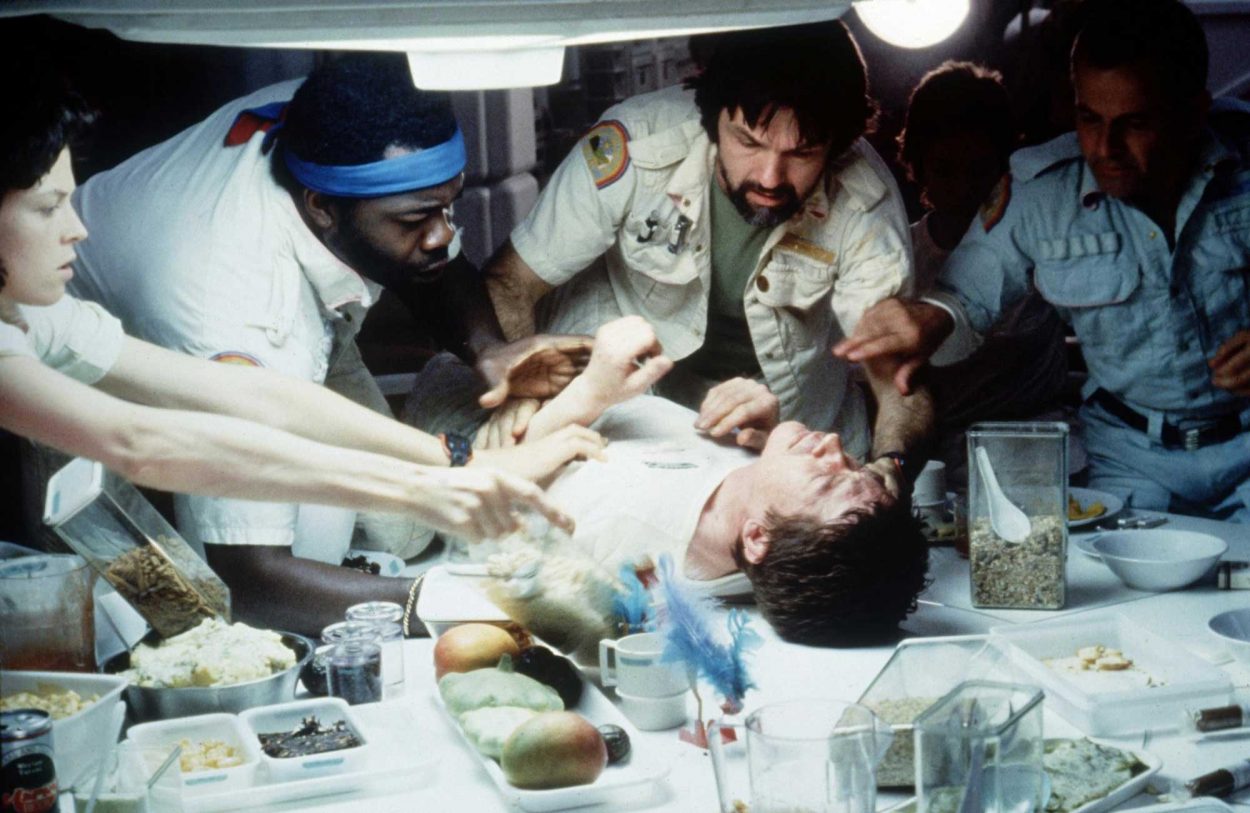
Alien is one of those movies that you can remember where you were and who you were with when you saw it for the first time. If you had a cat, and it got skittish in the middle of the night, you were afraid to find out why. A shadow on your bedroom wall, or a coat hanging on the back of your bedroom door with the lights off, could be Giger’s Alien. Like Elvis or The Beatles inspiring countless musicians when they appeared on The Ed Sullivan Show for the first time, the influence of this film on screenwriters, production designers, special effects artists, actors, and directors is prolific. It quite simply is a monster. The visual iconography of Alien still terrorizes audiences and grips them in Hitchcock like suspense, with seat jumping payoffs that are as powerful today, as they were in 1979. Alien – The Director’s Cut has some added footage (most notably Ripley discovering a cocooned Dallas and Brett), with some “minor adjustments” made to the existing footage, that does not disrupt Scott’s original pacing. In Space No One Can Hear You Scream—but at the New Beverly, we will hear you at the concession stand.
